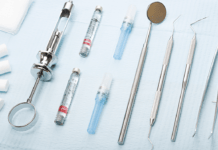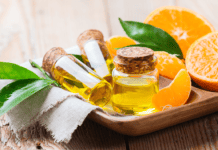Dental hygiene is a kaleidoscope of entities that do not always concentrate only on the oral cavity. The entire head and neck region should be the focus of every dental professional. Obviously, it is hard to look at the mouth without actually seeing the components surrounding this area.
Daily, dental patients sit in my chair and complain about sinus and allergy discomfort. They often mistake sinus pain for toothaches. Dental professionals should take this time to educate patients on how to keep sinus health up to par; patients can then reduce the incidence of sinusitis.
According to the American College of Allergy, Asthma, and Immunology, 31 million people a year suffer from sinus infections.1 Sinus infections are responsible for 16 million doctor visits, $150 million spent on prescription medications, and $1 billion spent on over-the-counter medications trying to resolve the issue.1
Sinus Cavities
The human body contains four sinus cavities or air-filled spaces. The maxillary sinuses are located on either side of the nose near the cheeks. The frontal sinuses are located near the forehead above the eyes. The ethmoid sinuses are located on either side of the bridge of the nose near the eyes. The sphenoid sinus is located behind the eyes deeper into the skull. Collectively, these sinuses are called paranasal sinuses.
Sinus cavities are lined with a thin layer of mucus that helps trap dust, dirt, and particles in the air. Hair-like projections help to sweep the mucus toward the throat, which then drains into the stomach. If the nasal tissue becomes inflamed and edemic, it blocks the hair-like projections, preventing them from functioning and thus trapping mucus in the sinus cavities.
Sinusitis develops when one or more of the paranasal cavities become blocked, triggering an infection. When this infection lasts at least 12 consecutive weeks or more, it is then termed chronic sinusitis.2
Similar to the mouth, the nasal cavity is home to millions of bacteria.3 As long as the bacteria drain, they are harmless. When the sinus cavities become blocked, the accumulation of bacteria-filled mucus creates “the perfect culture medium,” causing the bacteria to grow rapidly.3
The body’s response to this increased fluctuation of bacteria is to signal an inflammatory response. Headaches, pain, pressure, facial swelling, and thick yellow/green mucus from a rise in white blood cells are common symptoms of sinusitis. Others may even experience loss of taste and smell, headaches, halitosis, and tooth pain. Harvard sinus specialists have concluded through research that those affected by sinusitis report the highest levels of pain and the lowest levels of social functioning when compared to other chronic illnesses – such as heart failure and back pain.3
Anatomical factors may also play a role in sinusitis, such as polyps, cysts, and deviated septums. If patients continuously experience recurrent infections, a visit to an ear, nose, and throat (ENT) specialist is suggested. Endoscopes that are inserted into the sinus or CT scans may be needed to determine what the underlying cause of sinusitis may be. In some cases, surgical correction may be required.
Sinusitis has multiple culprits, and there are various classifications of sinusitis. Acute bacterial sinusitis and viral sinusitis are the two most common forms of sinusitis.9 These forms are created by bacteria and viruses that enter the nasal passages and mimic the common cold. Symptoms typically last seven to 10 days if viral, and symptoms that persist longer usually are bacterial.9 Bacterial infections often follow colds and flu. Viral sinusitis can be treated with over-the-counter meds, while bacterial sinusitis often requires antibiotic treatment.
Odontogenic sinusitis describes the sinusitis that results from a dental origin, such as a previous maxillary infection. Approximately 10% of all sinusitis cases are the result of an odontogenic process, with several reports stating that up to 40% of all sinusitis cases may have an underlying dental pathology.4
Allergic fungal sinusitis derives from a fungus, requiring either an antifungal agent or oral steroid treatment in lieu of traditional antibiotics. In some instances, allergic fungal sinusitis can be dangerous if the fungus penetrates the surrounding bone.1 Proper referrals to ENT for treatment and potential mucous cultures can assist in prevention.
Better Sinus Health
In order to better assist sinus health, several methods promote health within the paranasal sinuses.
Nasal irrigation ─ Using a device to flush the mucous away from the sinus cavity is a simple and inexpensive method to not only help prevent but treat sinusitis. The American Academy of Otolaryngology recommends using a mixture of iodized salt, baking soda, and distilled water.3 Dr. Ralph Metson, a sinus expert at the Massachusetts Eye and Ear Infirmary in Boston, recommends flushing the sinuses daily after brushing the teeth. He calls this the “brush then flush” method.3
Nasal sprays ─ Over-the-counter nasal sprays that contain xylitol have proven to help reduce the number of bacteria in the sinus cavities and give greater results when compared to saline sprays.5 Both saline and xylitol sprays help to moisturize the nasal and sinus passages.
Recently research clings to the hypothesis that xylitol combined with grape seed extract helps reduce the COVID-19 virus. Research suggests that xylitol helps prevent the virus attachment on the cell wall in the nasal cavity.6 Grape seed extract has been well known for its disinfecting properties against bacteria.7
IMPORTANT DISCLOSURE: It should be noted that the research regarding xylitol nasal spray and its effects on COVID-19 is early and in the in vitro stage, meaning the results of the research were found in a lab environment and not tested in humans. The researchers state, “Further research into the effectiveness of xylitol against SARS-CoV-2 is therefore required.”8 The website hosting this research states, “Reminder: these are preliminary reports that have not been peer-reviewed. They should not be regarded as conclusive, guide clinical practice/health-related behavior, or be reported in the news media as established information.”8
Controlling allergies ─ Allergies create sinus irritation, increasing the risk for sinusitis; therefore, managing allergies can help prevent sinusitis.
Maintain dental health ─ Considering studies report that maxillary infections can account for a large portion of reported sinusitis, maintaining regular dental exams can help deter dental infections by finding problems that arise sooner than later.
Dental professionals can help assist in the pain and suffering felt by the millions of sinusitis sufferers by becoming familiar with this chronic illness. Because there exists a high probability that people see their dentist more often than their physician, especially those that adhere to a routine six-month schedule, dentists can help patients who suffer from sinusitis through education and referrals to ENTs when necessary.
Need CE? Click Here to Check Out the Self-Study CE Courses from Today’s RDH!
Listen to the Today’s RDH Dental Hygiene Podcast Below:
References
- Sinus Infection. (n.d.). American College of Allergy, Asthma, and Immunology. Retrieved from https://www.acaai.org/allergies/types/sinus-infection.
- Chronic Sinusitis – Symptoms and Causes. (2019, June 1). Mayo Clinic. Retrieved from https://www.mayoclinic.org/diseases-conditions/chronic-sinusitis/symptoms-causes/syc-20351661.
- What to Do about Sinusitis. (2020, January 29). Harvard Health Publishing. Retrieved from https://www.health.harvard.edu/diseases-and-conditions/what_to_do_about_sinusitis.
- Little, R.E., Long, C.M., Loehrl, T.A., Poetkr, D.M. Odontogenic Sinusitis: A Review of the Current Literature. Laryngoscope Investigative Otolaryngology. 2018; (3)2: 110-114. doi:10.1002/lio2.1475.
- Salli, K., Lehtinen, M.J., Tiihonen, K., Ouwehand, A.C. Xylitol’s Health Benefits beyond Dental Health: A Comprehensive Review. Nutrients. 2019; 11(8): 1813. doi:10.3390/nu11081813.
- Keown, A. Over-the-Counter Nasal Spray Could Be Effective Against COVID-19. (2021, January 26). BioSpace, Retrieved from https://www.biospace.com/article/more-data-suggests-over-the-counter-nasal-spray-is-effective-against-covid-19-virus.
- Komura, M., Suzuki, M., Sangsriratanakul, N., et al. Inhibitory Effect of Grapefruit Seed Extract (GSE) on Avian Pathogens. The Journal of Veterinary Medical Science. 2019; 81(3): 466-472. doi:10.1292/jvms.18-0754.
- Cannon, M.L., Westover, J.B., Bleher, R., et al. (2020, December 21). In Vitro Analysis of the Anti-viral Potential of nasal spray constituents against SARS-CoV-2. bioRxiv. Retrieved from https://www.biorxiv.org/content/10.1101/2020.12.02.408575v3.full.
- Bacterial Sinusitis. (2020, Feb. 14). Ada. Retrieved from https://ada.com/conditions/bacterial-sinusitis/












